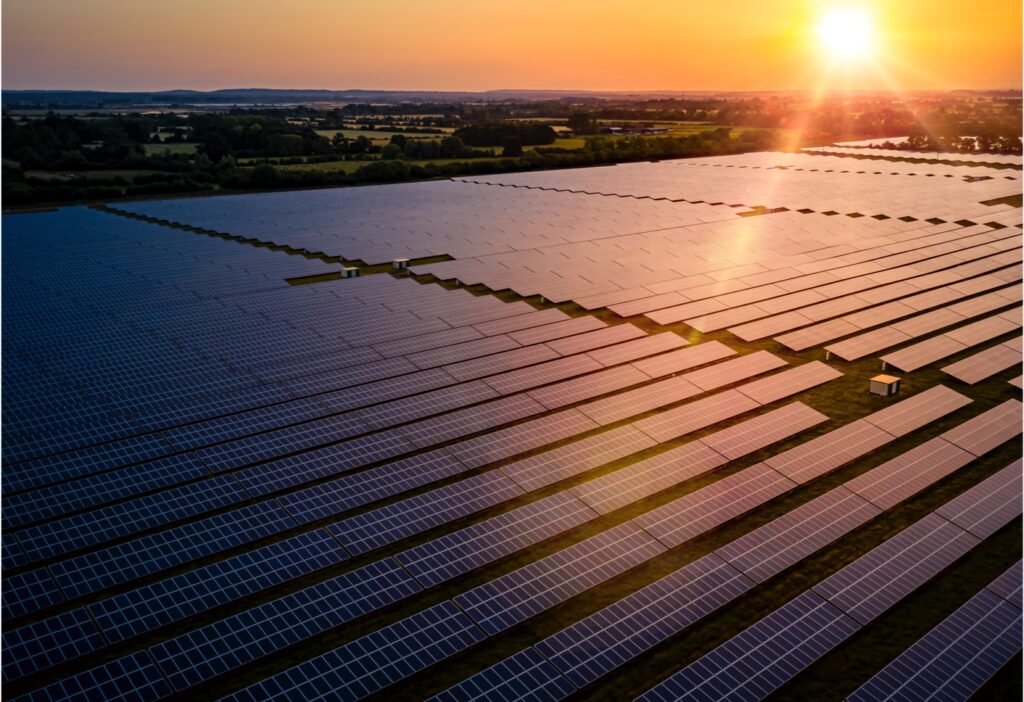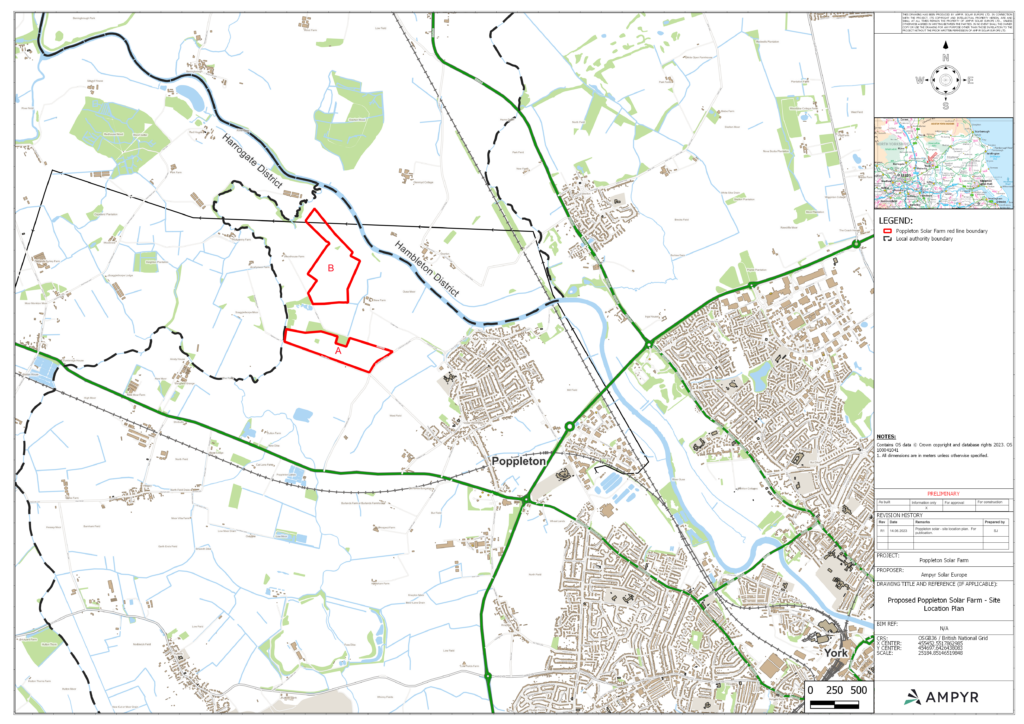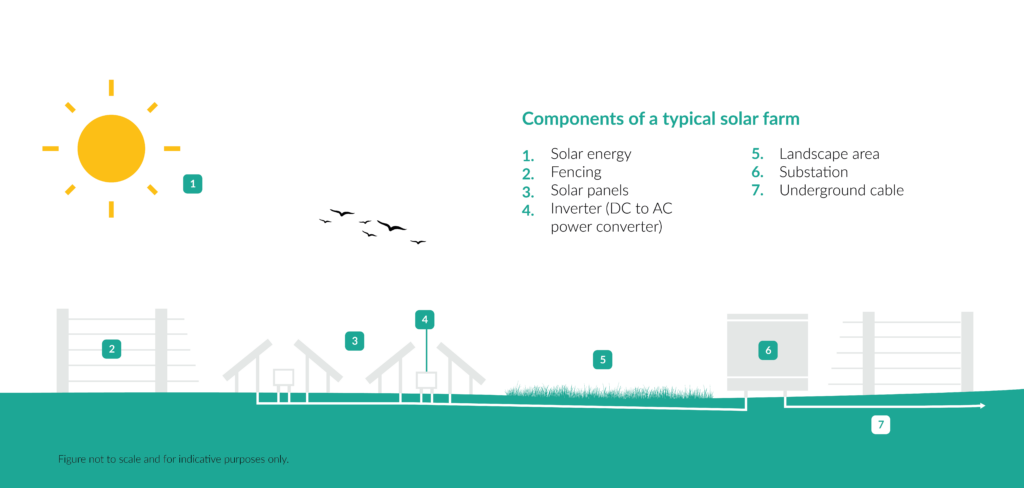Introduction
We are developing proposals for a solar farm to the northwest of the village of Poppleton, in the City of York Council area. The proposed solar farm has an expected generating capacity of 32 megawatts (MW) and covers 138 acres, including land for temporary work. The solar farm will be connected to the National Grid via an underground cable running approximately 3.5km from the south-eastern boundary of the site to the existing substation in Nether Poppleton.
A planning application for the solar farm was submitted to City of York Council on 5 December 2023.
The below sections give some background information on our proposals, and you can still read our consultation information boards. Since our consultation, some key changes have been made to our proposals, and these are explained on our Project update page, alongside a summary of consultation feedback.




